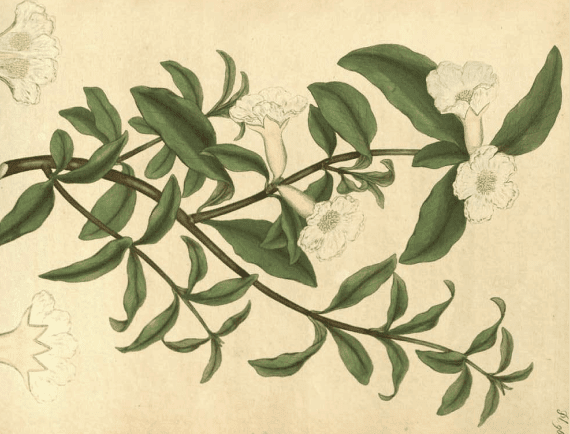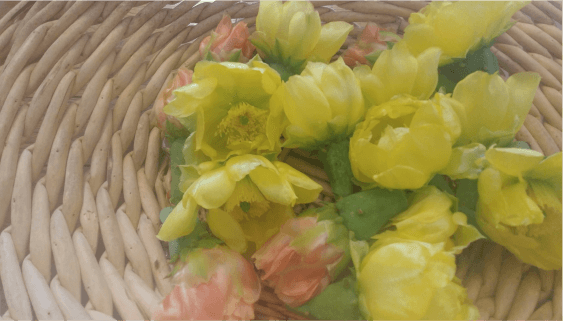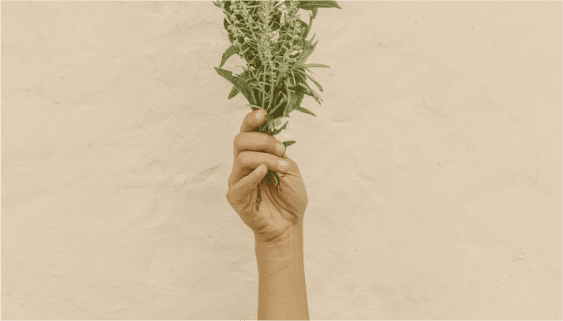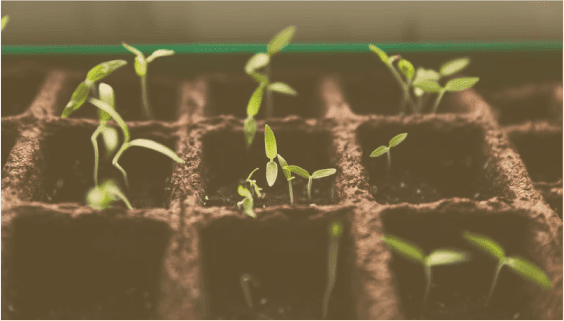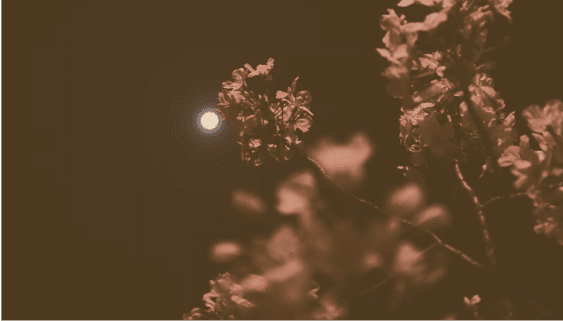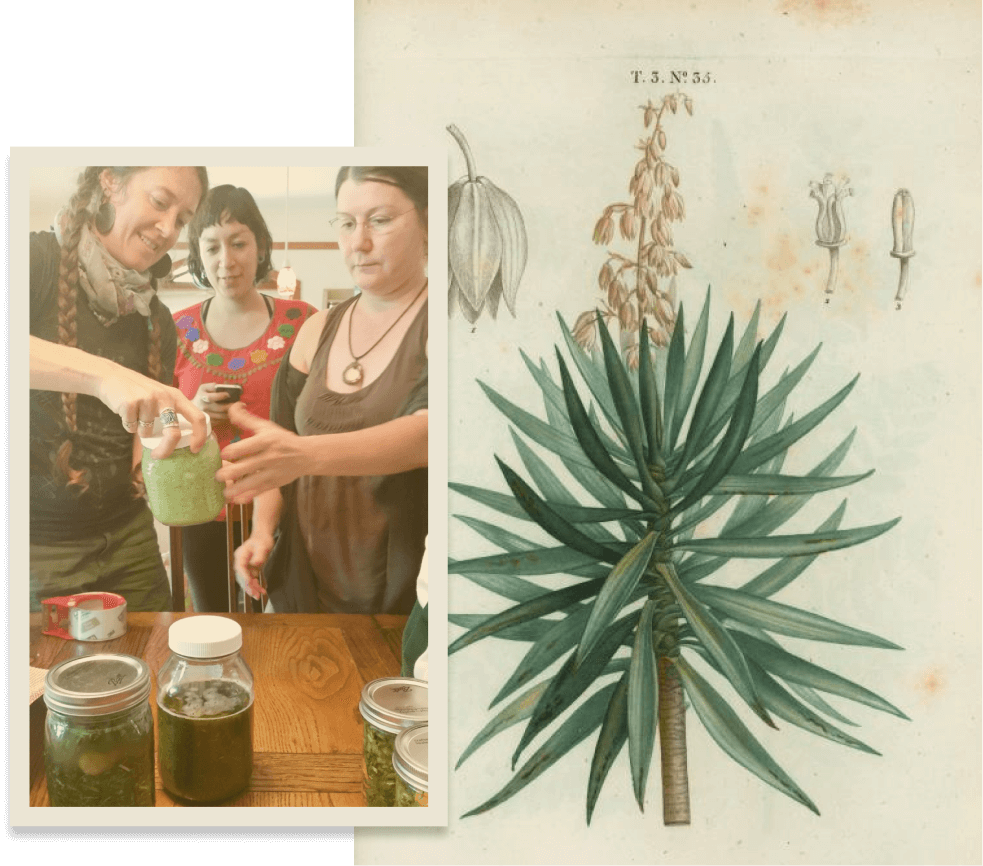Confessions of a Vervain Girl:
Glandularia Bipinnatifida
“We are at home on this planet – we have but to recognise it. From the ills of
humanity through the gift of herbal remedies comes a clue, a signpost, to this reality.
We are part of a wonderfully integrated whole. This is not the stuff of vague idealism
and mysticism but a solid reality.” – David Hoffman
Vervain. The name itself sounds like the beginnings of an ancient spell; some
mystical incantation locked away in a spring storm. The first time I saw her, the
Enchanter’s Plant, La Herba Sacra, or Glandularia Bipinnatifida, she was sprouting up
in the greenbelt of Austin, Texas like quiltwork patches, her purple flowers quenching
the heat of the day. She radiated a cool, charming, ego-taming love. I gathered her at
sundown and hiked back up, intuitively chewing on her sweet flowers and feeling the
heat of the day leave my body.
While Vervain often feigns coyness, waving in the fields daintily, her history
paints a regal image of purple and blue flowers adorning the heads of young maidens,
and priests in ancient Rome burning her to cleanse the altars of Jupiter. Also called the
Holy Herb, she is known for her powers in the realms of love, protection, purification,
peace, money, youth, sleep and healing (Cunningham 251-252). Interestingly, when
I asked several herbalists about their use of her, they responded with a healthy dose
of diffidence, followed by an outright confession of never having a desire to use her.
“Vervain is one of those plants I’ve never used much,” says herbalist Anne Merrill, “then
this morning I woke up grouchy and out of sorts. Liverish. I decided to give Vervain a
try…nasty tasting stuff. Within twenty minutes the grouchiness was resolved. So I guess
it’s time to try Vervain!”
Vervain is one of many magical herbs that spreads its medicine throughout
multiple body systems. Carrying with it cold, new moon energy, it even speaks the
language of the secret endocrine system. Though not much is known about this
mysterious realm, Kiva Rose, Nicole Telkes and David Hoffmann all note that Vervain
has an equally elusive effect on it. The Spanish even call vervain “el dormilón” or
“sleepy head.” Perhaps she has an effect on the pineal gland which regulates melatonin
and controls other hormone production. This would make sense considering the third
eye clarity that many people experience with Vervain. During a Materia Medica proving
with her, several students also noted a tingling sensation down the throat, indicating the
medicine she offers aids in recovering from colds and flus and has an affinity to the
respiratory system. The New Holistic Herbal recommends Vervain for those healing
from influenza, as it eases the depression that often follows the illness. In addition,
Vervain acts as both an expectorant and a febrifuge, ridding the body of excess mucus
while reducing fever (Hoffman 143-147). Kiva Rose adds that Vervain treats body
aches, irritability and general tension that can accompany an illness and has a
particularly potent diaphoretic effect when paired with elderflower and bee balm. It can
also relieve headaches, and works best in a preparation of tea or tincture (Richo Cech).
Anne Merrill’s language for Vervain indications as “liverish” is fitting if not
intuitive. A hepatic, Vervain strengthens, tones and stimulates the secretive functions of
the liver, increases bile flow and can even help rid the body of excess bile in jaundice
conditions. Folk remedies have used it as a “spring tonic” to cleanse the liver after a
harsh winter’s diet. (Hoffman 52, 61). Vervain’s claim to fame, however, is her ability to
charm and soothe the nervous system. Richo Cech classifies Vervain as a nervine
sedative, while Nicole Telkes notes her ability to treat hypersensitivity. A mild to
moderate relaxant, Vervain elevates mood and feeds nervous tissue (Hoffman 65). In
both alcohol and vinegar preparations, Vervain offers a clue to her powers in her taste;
slightly pungent and bitter, she makes a perfect gut medicine. Paul Bergner calls her a
“digestive bitter” while Richo Cech describes her as an herb to “improve sluggish
digestion,” one that can possibly help to clear out any intestinal parasites. Marika
Alvarado uses Vervain to calm the stomach, especially after birth when a woman’s
uterus is swollen and exhausted. As a patera, Marika uses Vervain as an important
component in an after-birth ritual she performs, adding that she also gives the tea to
women before performing La Sobada massage. The image of Vervain, with it’s purple
flowers opening up from dark centers, seems to beckon to women. Added to a female
tonic, she stimulates and normalizes menses, and calms the feminine center as an
antispasmodic (Hoffman 143). Both David Hoffman and Richo Cech describe Vervain
as an effective galactagogue, increasing milk production in lactating women as well
providing a healthy dose of tranquility to the baby’s mood. Additional uses include
treating hemorrhoids with a Vervain tea sitz bath and using a fresh plant poultice to treat
sore muscles, the pain of rheumatism and to speed up the healing of wounds, burns
and lesions. Paul Bergner has even included Vervain in a heart tonic (that’s one
powerful, multi-useful plant spirit)!
Vervain’s indications (like all plant spirits) create a certain picture of those who
need her medicine the most. Kiva Rose suggests this plant for those who carry tension
in their shoulders and neck. Vervain types are intense, adrenally dominated, driven and
highly critical, or as Michael Moore would say, “metabolically brittle.” He notes that
alcoholism and/or a tendency toward addiction are not uncommon. The New Holistic
Herbal describes the typical Vervain woman (specifically around her mense) as edgy
and anxious, with a personality that fluctuates between increased dissatisfaction and
feelings of being wired. Hot flashes, digestive upset and hypersensitivity are common,
along with intervals of intense binges followed by feelings of deprivation. The Vervain
woman can be critical toward self and, according to Nicole Telkes, adapt a “whiny, poor
me” attitude. With bouts of rage, she can one minute experience a deep craving for
chocolate, the next feel the need to “bathe in blood,” (David Hoffman). Perhaps the
bloody Queen Mary herself was a Vervain girl (a spoonful of psychotherapy also
recommended).
Spiritually, Vervain is an ego-charmer, cooling down the excitement or arrogance
one can experience following the absorption of new knowledge (Sheri Hupfer). A Bach
flower remedy of Vervain treats “over-enthusiasm, over-effort and straining; fanaticism,”
while Traditional Chinese Medicine uses it as a remedy for yin not holding down yang
(Hoffman 67). Worn on the body, Vervain offers love, protection and a sense of being
grounded, a power attributed to her Earth element (Cunningham 252). Kiva Rose
describes the spiritual properties of vervain as providing a clear path and perspective.
“Vervain is a mender of broken edges,” she eloquently writes, “and sometimes, a great
giver of dreams.”
In preparation, both Richo Cech and David Hoffman recommend using the aerial
portions of vervain in the early flowering stage. All above ground parts can be used
fresh or dried (although Cech prefers a concoction without the stems). To create an
optimal tincture, a fresh plant to solvent ratio should be 1:2 (75A:25W) while the dried
herb should be a ratio of 1:5 (50A:50W) (Cech 233). Hoffman suggests an infusion of
Vervain using 1-3 teaspoons of the plant to a cup of water, two to three cups a day.
Vervain is particularly effective as a bitter, in tea form, taken 15-20 minutes before a
meal (Cech 232). While vervain is typically benign in nature, it is “not to be used during
pregnancy or in the presence of overt liver disease,” (Cech 232).
In our Materia Medica class proving, I found Vervain to be cooling and
moistening. Something about her sweet flowers reminded me of honey, and with a
single sip I felt third eye clarity, an improvement in vision and a tingle down my throat
and spine. Secondary effects upon my physiological being were an intensity of vivid
colors and a release of tension in my neck, yet I still felt myself denying the spiritual
changes. Alas, these are the confessions of a true Vervain girl: the liverish fog soaking
up the days around my menses, the grouchiness that follows, the intense cravings, self-
criticism, feelings of guilt that result in deprivation. I denied myself vervain, although she
was beckoning to me with her medicine, simply because I didn’t want to recognize
those parts of me that yearned for her. With a few drops of her power, the tingle down
my spine allowed all of that intensity to leave my body with a final bow, a relief that
seemed to venerate her magic and embrace her with gratitude. Through my studies
with Vervain, I created an uncanny image that came together like puzzle pieces, but
didn’t quite speak to me wholly until I accidentally thumbed over a passage titled
“Patterns of disease of the nervous system” in the New Holistic Herbal. In the passage,
David Hoffman details a representative list of “a number of conditions [that] have an
especially strong relationship with the nervous system, whilst not producing neurological
symptoms.” This list includes the circulatory system (noting high blood pressure and
coronary disease), the respiratory system, the digestive system, the skin (with a
connection to the liver), the endocrine system and the reproductive system. Every
single indication listed has been mentioned in relation to Vervain. All things in nature
are interrelated, the body is no different. After spending several months with Vervain,
her spirit, the education surrounding her, it is blatantly obvious that whatever effect she
has on the nervous system cascades down to other systems, creating optimal wellness
in the human spirit. She is pure summer magic, growing underneath the rising of the
Dog Star, waiting for a girl like me to pluck her.
Works Cited
Hoffman, David. The New Holistic Herbal. Great Britain: Element Books Limited, 1990.
Print.
Cunningham, Scott. Encyclopedia of Magical Herbs. Woodbury, MN: Llewellyn
Publications, 2011. Print.
Cech, Richo. Making Plant Medicine. Williams, OR: Horizon Herbs LLC, 2000. Print.
Paul Bergner. North American Institute of Medical Herbalism. medherbs.com
Kiva Rose. Folk Herbalism. bearmedicineherbals.com
Contributing Herbalists:
Anne Merrill
Michael Moore
Kiva Rose
Paul Bergner
Nicole Telkes
Marika Alvarado
Sheri Hupfer
Scott Cunningham
David Hoffman
Richo Cech
Works Cited

